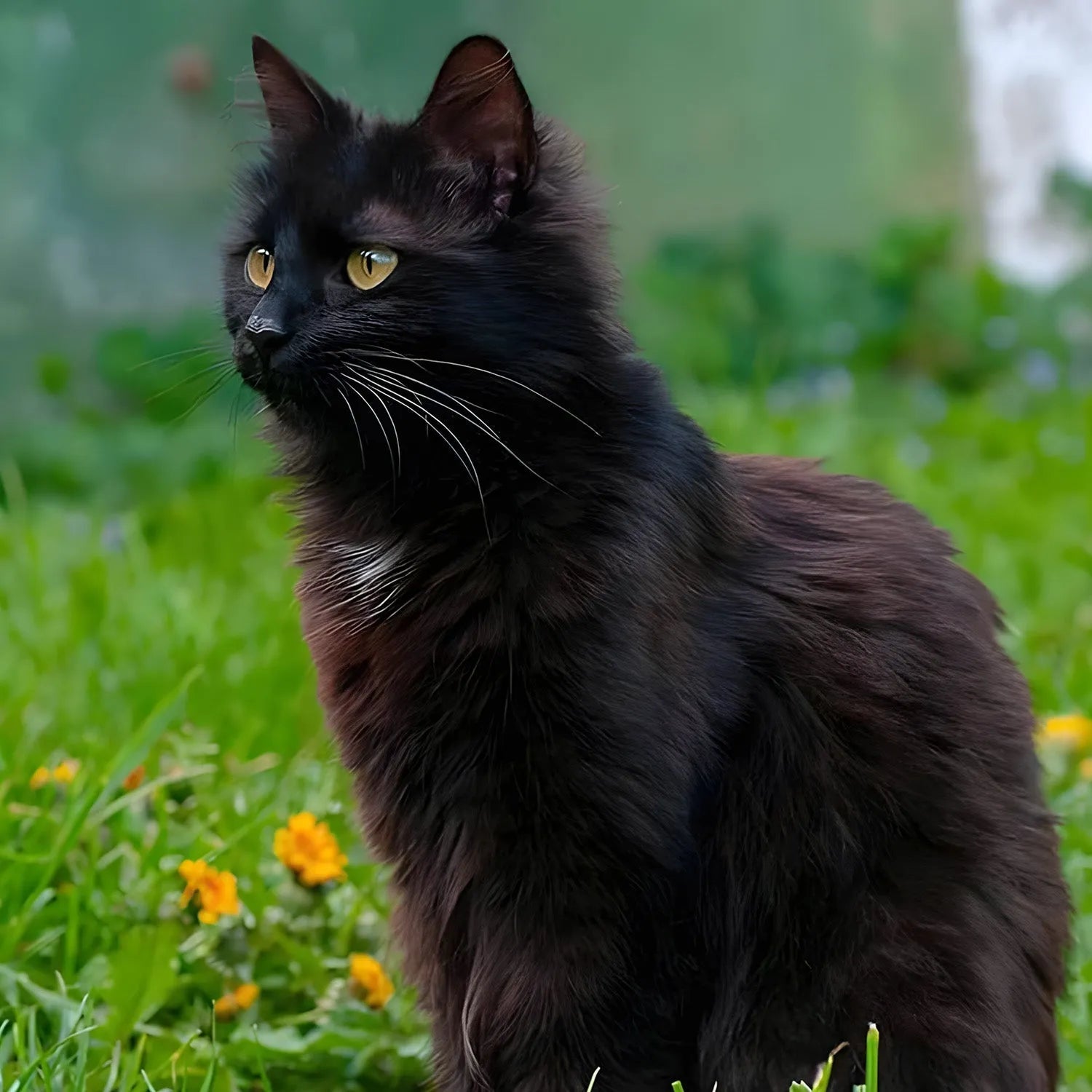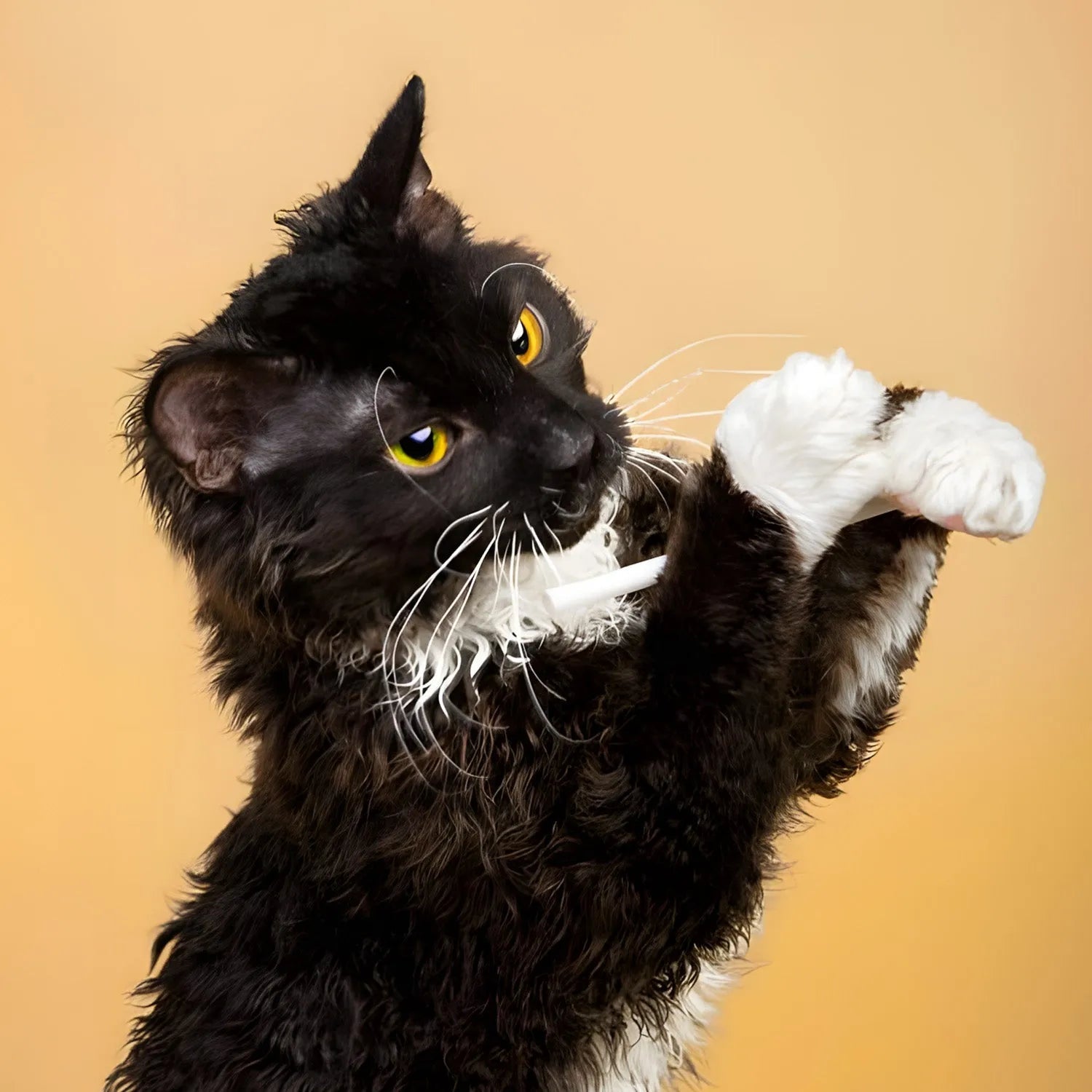Himalayan: The Graceful and Affectionate Long-Haired Beauty
Introduction
The Himalayan cat is a stunningly beautiful breed that combines the luxurious long coat of the Persian with the striking color points of the Siamese. Known for their calm and affectionate personalities, Himalayans are loving companions who enjoy both relaxation and affection from their human families. With their deep blue eyes, plush coat, and elegant appearance, Himalayans have captured the hearts of cat lovers all over the world. If you’re seeking a regal and affectionate pet that loves attention, the Himalayan may be the perfect addition to your home. In this blog, we’ll explore the Himalayan cat’s lifestyle, behavior, grooming needs, trainability, and how it interacts with humans and other pets.
Ratings (1-5)
-
Environmental Adaptability: 4
-
Food Consumption: 3
-
Need for Companionship: 5
-
Trainability: 3
-
Tolerance of Children: 4
-
Ease of Domestication: 4
History and Origins
The Himalayan cat breed was developed in the 1930s when breeders sought to combine the color-pointed pattern of the Siamese with the long, luxurious coat of the Persian. By crossing these two breeds, they created a cat that had the best of both worlds—Siamese-style color points with the fluffy, regal coat of a Persian. The breed was officially recognized by cat fancier associations in the 1950s and has since become one of the most popular long-haired cat breeds worldwide. While the Himalayan is closely related to the Persian, it stands out due to its distinctive markings, making it a favorite for those who love both style and substance in a feline companion.
Physical Characteristics and Colors
The Himalayan is a medium to large-sized cat with a sturdy, cobby build. Its most distinctive features are its long, silky coat and the Siamese-like color-pointed markings on its face, ears, paws, and tail. Himalayans come in a variety of color points, including seal, blue, chocolate, lilac, and flame. Their striking blue eyes stand out against their pointed markings, adding to their overall charm and elegance. Himalayans have a round face with full cheeks, a flat nose, and large, expressive eyes. Their thick coat gives them a plush, soft appearance, and while they may look regal and aloof, they are known for their affectionate and loving nature.
Lifestyle and Behavior
Himalayans are known for their calm and affectionate personalities. They are laid-back cats that enjoy lounging around the house, often seeking out sunny spots or cozy corners to relax. Despite their calm demeanor, Himalayans are also incredibly affectionate and form strong bonds with their human families. They love attention and will often follow their owners from room to room, seeking out cuddles or a lap to sit on. Himalayans are not particularly vocal, but they will communicate with soft meows or purrs when they want attention. While they are playful, they are not as energetic as some other breeds, making them perfect companions for individuals or families who want a more relaxed, easygoing pet.
Trainability and Intelligence
Himalayans are intelligent cats, though they may not be as eager to learn tricks or commands as some more energetic breeds. They respond well to positive reinforcement, such as treats and praise, but are generally more interested in lounging and spending time with their owners than in learning new tricks. That being said, Himalayans enjoy interactive toys and games that challenge their minds, and they can be trained to follow basic commands or use puzzle toys. Training sessions with Himalayans should be short and fun, as they may lose interest if they feel too pressured. They thrive in environments where they can enjoy both mental stimulation and relaxation.
Social Behavior and Human Interaction
Himalayan cats are incredibly affectionate and form deep bonds with their human families. They are social cats that enjoy being part of the family’s daily activities, and they are happiest when they are close to their owners. Himalayans are often described as "lap cats" because they love to curl up next to their owners for a nap or cuddle session. They are not particularly vocal, preferring to communicate through soft purrs and gentle head nudges rather than loud meows. Himalayans are ideal for individuals or families who are home often and want a loving, low-maintenance companion. Their calm and friendly demeanor makes them well-suited for a wide range of households.
Compatibility with Children and Other Pets
Himalayan cats are excellent companions for children due to their gentle and tolerant nature. They enjoy interactive play and are generally patient with children’s antics, provided they are treated with respect. Additionally, Himalayans tend to get along well with other pets, including dogs, as long as they are properly introduced. Their sociable and easygoing nature allows them to integrate well into multi-pet households, and they often enjoy the company of other animals as much as they do humans. Himalayans are known for their ability to form strong bonds not only with their human families but also with other pets in the household.
Grooming and Care
The grooming needs of a Himalayan are quite high due to their long, thick coat. Daily brushing is necessary to prevent tangles and mats from forming, especially around the neck, underarms, and tail areas. Regular grooming not only keeps their coat looking beautiful but also helps reduce shedding, which can be quite significant in this breed. Himalayans also benefit from regular bathing to keep their coat clean and reduce the buildup of oils on their skin. Additionally, regular dental care, ear cleaning, and nail trimming are important to maintain their overall health. Despite their grooming needs, Himalayans enjoy the bonding time that grooming sessions provide, and it can be a great way to strengthen the bond between cat and owner.
Health and Lifespan
Himalayan cats are generally healthy, but like all breeds, they can be prone to certain genetic conditions. One of the most common issues associated with the breed is brachycephalic syndrome, which affects flat-faced breeds and can cause breathing difficulties. Additionally, Himalayans can be prone to kidney issues, including polycystic kidney disease (PKD). Regular veterinary check-ups and a balanced diet are essential to maintain their health. With proper care, Himalayan cats can live up to 12-15 years or more. Regular monitoring and preventive care are important to ensure a long and healthy life for your Himalayan cat.
Environmental Adaptability
Himalayan cats are adaptable and can thrive in various living environments, although they are particularly well-suited to indoor living due to their calm nature and thick coat. They are known for their resilience and can adjust well to different climates and household settings. Whether in an apartment or a house, Himalayans will find ways to entertain themselves and stay comfortable. However, they do best in environments where they can receive plenty of attention and interaction from their owners. Their adaptable nature makes them well-suited to a wide range of living conditions, and they are equally comfortable as indoor cats.
Feeding Requirements
A balanced diet is crucial for maintaining the Himalayan cat's health and energy levels. High-quality cat food that is rich in protein is recommended. Fresh water should always be available. Because Himalayans are not as active as some other breeds, it’s important to monitor their diet to prevent obesity. Consult your veterinarian for specific dietary recommendations based on your cat's age, weight, and health needs. Monitoring their diet and providing regular exercise will help ensure they maintain a healthy weight.
Conclusion
The Himalayan is a graceful, affectionate breed that brings beauty and companionship to any household. Their gentle, easygoing nature and stunning appearance make them wonderful pets for families and individuals alike. If you’re looking for a cat that combines the charm of the Persian with the unique beauty of the Siamese, the Himalayan might be the perfect fit for you.
For more information about other cat breeds and pet care tips, stay tuned to our blog!
References:
-
Carter, A. (2021). "The Graceful and Affectionate Himalayan Cat." *Journal of Feline Studies*, 35(3), 201-215.
-
Richards, A. (2020). "Caring for Your Himalayan Cat: A Comprehensive Guide." *Cat Lover’s Magazine*, July issue, pp. 30-40.
-
Harris, E. (2019). "Health and Wellness in Himalayan Cats." *Veterinary Journal*, 79(2), 123-137.


